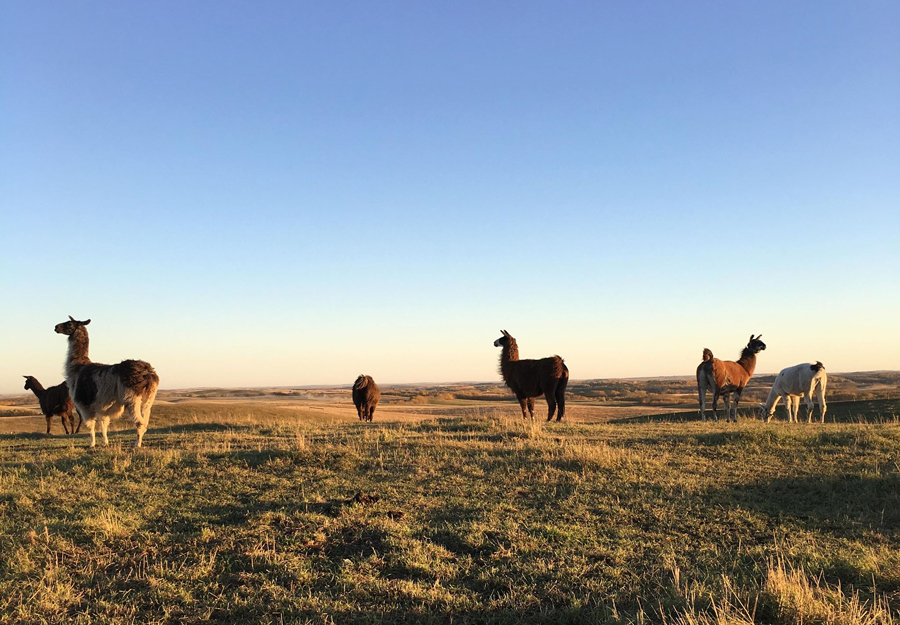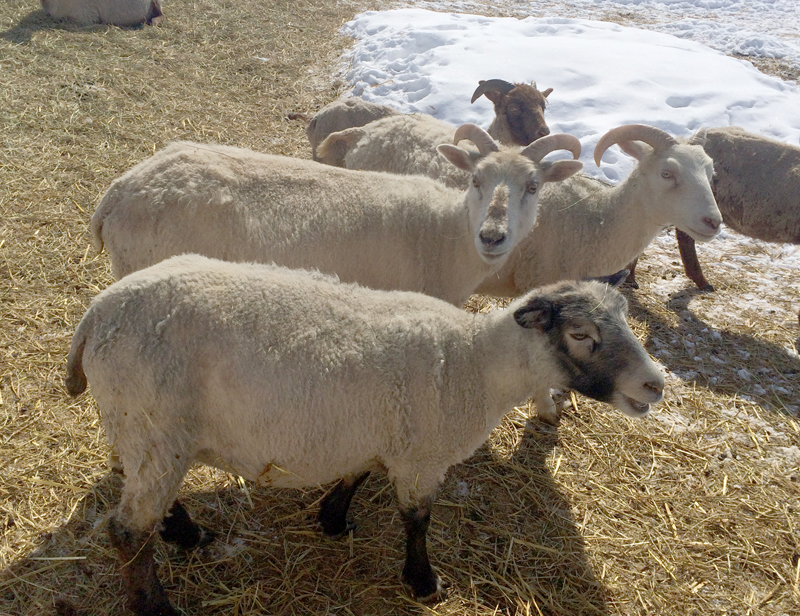I first met Karen earlier this year, and we hit it off immediately. Karen has had a fascinating journey so far, one whose path she’s still on. Originally from Britain, she’s travelled the world extensively having spent time in Spain, Australia, South Africa, Zimbabwe, India, Peru, Chile, Mexico, Bolivia, Belgium, Bangledesh, and Thailand – just to name a few! So Clandonald, with a population of about 100 on the prairie of Alberta, seems like an unlikely spot to settle.
Karen was still working as a health scientist and then a manager when she came across what would become her home in Clandonald, and she fell in love with the house and the property. Then, one day while Karen was debating the next steps in her then-current career, she realized that she spent more time researching and dreaming about having her own fibre and organic farm than anything else, and that was what got her really excited. Before she gave herself the opportunity to change her mind, she phoned her boss and resigned. That was the first step in her journey into raising her llamas an alpacas, animals she had fallen in love with after her time spent in Bolivia, and it’s a choice she has not looked back at since.
She now houses a herd of 15 animals, five rescue dogs, along with her newest addition of a flock of Icelandic chickens. Karen takes a very holistic approach to life, farming, and her animals, and she has big plans in store for the future.
First thing’s first – please introduce yourself, your farm, and your animals to us.
Hi there! I’m Karen from Muriel’s Truth near Clandonald, AB. I have an 18 acre rural acreage where I’m enjoying building a small homestead business that explores the concept of ‘being the change you want to see in the world.’ More specifically, Muriel’s Truth is guided by my vision of the change I would like to see in the world and letting my personal values [be] the foundational values and direction of a successful business.
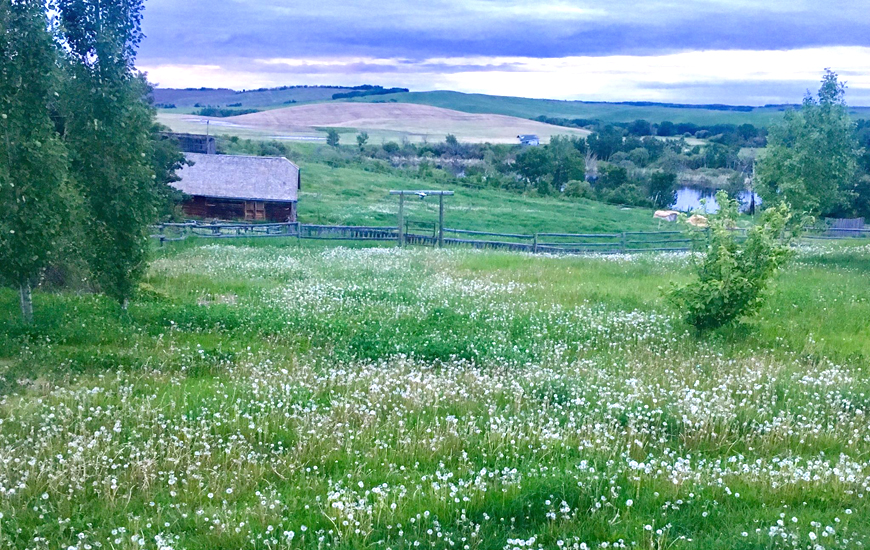
There are 4 classic llamas and 2 wool llamas. The wool llamas are relatively young and have good white fibre. They lived on a hillside down by the Vermilion River and were destined for a slaughter plant but the owner couldn’t secure transport for them. They were free to anyone who could round them up, so with some help from my neighbours we did just that, in 3 minutes! Seven of my 9 alpacas were living without shelter among bison last year. A concerned neighbour bought them and gifted them to me to be their lifelong guardian. They are of differing ages and their fibre last year was indicative of the conditions they’d been living it. It will be interesting to see how their fibre checks out this year. Baby Domingo was born to Melody-Rose (Rosie) on a Sunday in July. I went down to the pasture for a general check and Rosey came up to me for the very first time like she wanted to show me something. And there was Domingo! His fibre is going to be extremely soft this year. And then there’s my newest addition Wullie who is the nicest example of an alpaca I have. His white fibre looks and feels awesome! The animals are currently separated into three general groups: females, intact males and geldings. Alpacas and llamas are mixed together so each group has at least one llama guard. There is some mixing between the intact males and geldings based on the animals’ social ability and standing.
On the subject of climate appropriate animals, how do alpacas and llamas fair in our harsh climate? Are there any special measures you have to take when it’s really cold here?
Interesting enough, camelids are thought to have originated in North America. Some established breeders see themselves reintroducing llamas and alpacas to this continent instead of being importers of exotic species. But back to the original question, the climate here is very well suited to alpacas and llamas. The fall / spring climate is very close to that in their environment in South America (approx 0-20 degrees celsius). At minimum, in Canada, llamas and alpacas need a three sided shelter. I try and make sure they have either the barn or what I call a three and a half sided shelter. But in my experience, they don’t really seek shelter very often. They tend to use the barn and the shelters as porta-potties – they literally lie outside on watch-out for coyotes and go into the barn to take a poop! Only in temperatures below -25 do I find them huddled in shelters. I like to make sure the older animals have access to the best shelters – and they should get fed warm and mushed up beet pulp, alfalfa pellets and soy/canola meal to keep their weight on through the coldest months.
You started in the engineering field, but made the change to raising alpacas and llamas – that’s a huge switch! Why did you make that jump?
Well, first off I’ve had three professional careers already: one in engineering, one in health science and the last one in business management, so making change is not new to me. Landing that last ‘dream job’ gave me the opportunity to accomplish another childhood dream and buy a farm. So I bought a quarter section of land and began to take in rescue llamas. The only reason why I chose llamas was because I used to see them when I lived in Bolivia, and knew that they were easy keepers. It didn’t take very long for me to become fascinated by fibre, fall in love with the farm and out of love with my job. So I very bravely took that leap. I sold my farmland, keeping my home and 18 acres, and took a part time job in a local town to pay the basic bills. It’s a very different life than I had before but I enjoy every second of it.
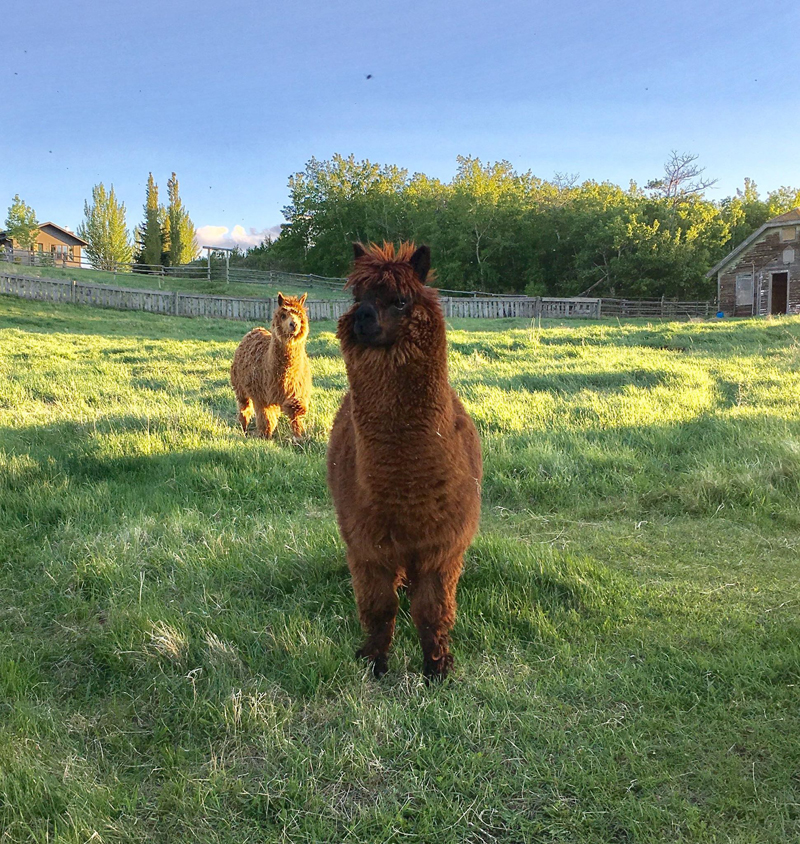
Since this is your first year producing fibre for market, what is the most surprising thing you’ve learned so far?
I’m not sure if I can define just one. Here are a few that I’ve learned over the past 3 years of keeping fibre animals:
- ● Not all llamas are good fibre producers. I had no idea that there are ‘wool’ llamas and then there are classic llamas.
● Artisanal spinners in North America do not appear to be interested in llama fibre. I would like to change that perception.
● Different people look at, use, sort alpaca fibre different ways. There’s not a lot of knowledge transfer between fibre producers and spinners. I would like this to change too.
I know you especially love llamas – tell us why they’re so awesome.
Llamas are awesome because they are economical and serve so many purposes at once. To the Andean peoples, they are useful for fibre, meat, hide, packing, guarding and have a variety of spiritual purposes. But what really makes llamas so awesome here at home is that they are a natural coyote management tool. I sometimes go down to the barn if I feel there’s too many coyotes too close and I routinely find the alpacas hiding in the barn while the llamas patrol outside. I have complete faith in my llamas to keep themselves and my sweet little alpacas safe.
So tell me more about llama fibre. It’s definitely underrepresented in the North American market. What are some of the characteristics? What makes it desirable to spinners?
Llama fibre is a non-lanolin ‘wool’, just like alpaca but it is thicker, coarser and in my opinion, warmer. My experience thus far is purely practical. Living in Bolivia, I had sweaters made out of alpaca and llama fibre. The alpaca sweaters were thin, soft and luxurious but I found myself wearing the thick chunky llama sweaters on a regular basis. Maybe people would wear Christmas sweaters more often if they were made out of llama wool!
I love Wullie the alpaca – tell us a bit about him.
Wullie is an alpaca that was brought to my attention by Dominion Fleece & Fibre. Wullie was advertised on a FB page and I had absolutely no intention of giving him a home. I wished him a good home. I didn’t expect it to be my home. I followed the post for a few days and when the owner exclaimed “he’s free, will someone please come and get him”. I jumped into action. There was obviously something wrong with Wullie for someone to sound so desperate. I learned that he was living alone without a herd, he was pushing around children jumping on other farm animals. I made plans to collect him the next day. In my car. Yes, I brought an alpaca home in the back of my car.
I made a little herd for him and he’s now happily learning how to be a normally adjusted alpaca.
It’s evident that someone had cared for him very dearly at some point but unfortunately was allowed to display behaviours that aren’t conducive to a good human-alpaca relationship. He loves hugs, neck scratches, and humans. He walks well on a halter and is always so happy to see me. He also loves the camera! He has turned out to be the funniest, loveliest alpaca! Even if he does try and eat my hair sometimes. How awesome is that?
Kelly: I just have to add here – I saw him originally on Facebook and I knew he needed a good home. I live vicariously through Karen’s adventures, and I knew he’d find a good home with her herd. I was so thrilled when she told me she was going to get him!
Have you done anything with the fibre from your animals so far? Is there anything you want to learn so you can do more with your animals fibre?
I have used raw fibre in my vegetable garden. It was very effective in weed control. This year I want to trial making some ‘mats’ to roll out onto the garden, which means that I need to learn how to felt. I would also like to learn how to skirt, sort, clean, card, spin and work my fleece so I can understand more what spinners maybe looking for. Funnily enough, I’m maybe more interested in exploring uses for poorer quality fibre so that I can find markets for my older animals and classic llamas that I have committed to.
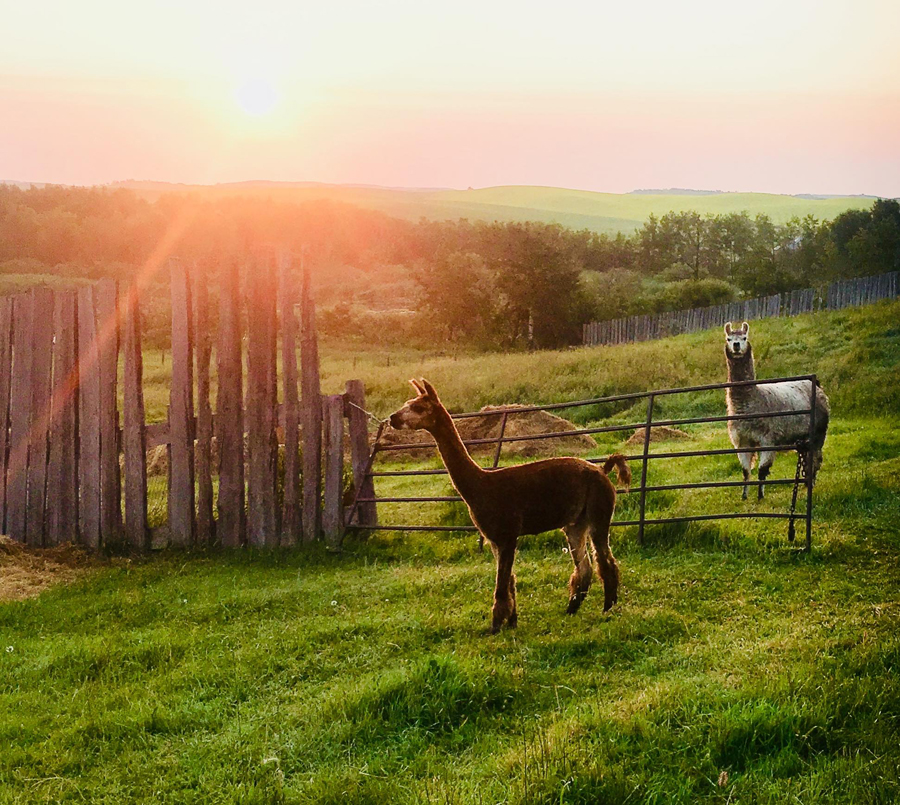
Where do you see your farm going? You have so many plans for the future, seems like the possibilities are endless!
I really want Muriel’s Truth to be a little homestead business that acts as a catalyst and a one-stop shop for other homesteaders in the area so we can all begin to live in a way that brings more awareness, appreciation and satisfaction to what we make, sell, buy, own and eat. I have bought an old schoolhouse in Elk Point that was used by a local church for rummage sales. I’m hoping that the building can be restored to act as a hub for local homesteaders to come together and create business. Whether this business is exclusively fibre, food, crafts, homestead services or is a little of each remains to be seen.
But that is the rough vision for the future. All I can do in the present is follow my journey and find avenues for making money in an excess good I create or produce. Fibre is just one spoke on this dream wheel and the fibre world.
What was the one thing you wish non-farmers knew about your business?
That the fibre you buy from my farm has lived a life in pastures where the animals have enjoyed munching on grass and rolling in straw, hay, grass, dirt and playing in bushes. It’s a happy, satisfied fibre.
All images ©Karen McCaig, used with permission
